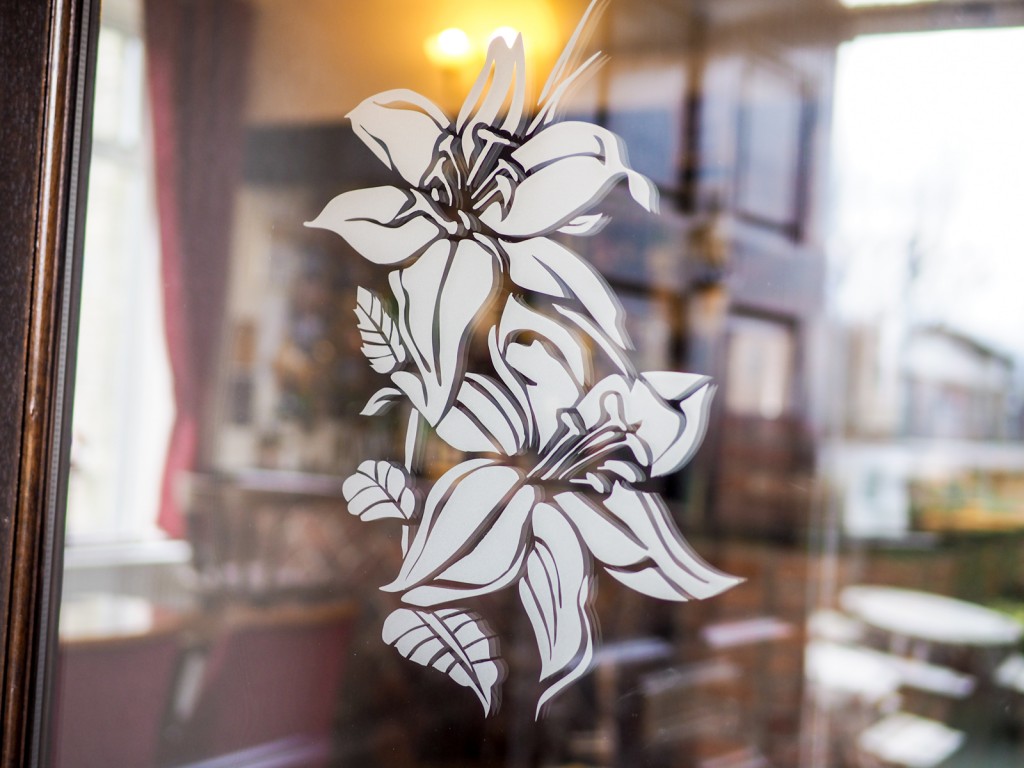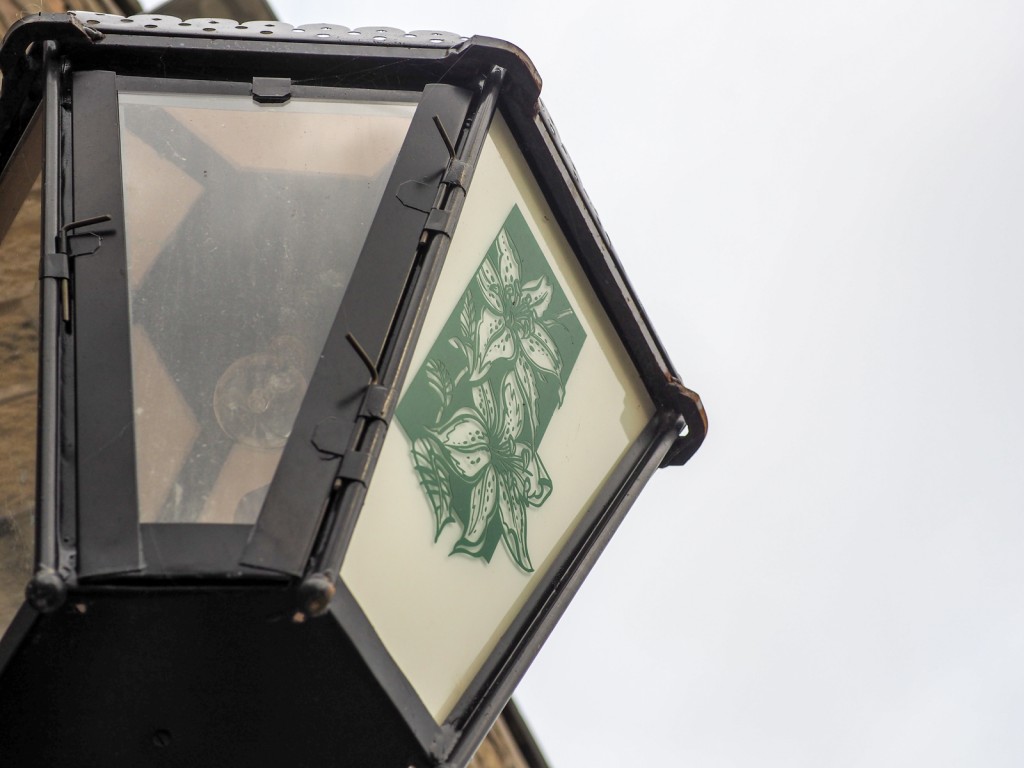A brief history of The Golcar Lily – The birth of the supermarket on Bolster Moor.
Building started on the Golcar Lily in September 1873; a site was cleared of general rubbish & hedgerow, which had been damaged & left derelict from the building of Heath House Lane, originally known locally as Occupation Row. The lane traced the route of an ancient footpath, whose earliest recording seems to have been in the mid 1500’s, leading across Scapegoat Hill to Wellhouse & on over the moors through Marsden, used originally as a pack horse trail with wool heading for the markets of Manchester, returning with salt from the Cheshire plains. In later centuries, it led from the outwork cottages of Outlane, Scapegoat Hill & even as far afield as Elland, to the ‘Slaithwaite Docks’.
Local entrepreneurs decided to take advantage of the coming Industrial Revolution and in the 1860’s built a Mill. It would seem to be the perfect site with a ready supply of water which flowed from the fields & natural springs of Bolster Moor, so a millpond was formed at the end of Heath House Lane to supply the steam engine that would power the looms? With the building of the Mill, came a steady influx of families mainly from Elland and Huddersfield. There was a population explosion on Bolster Moor, when the 9 cottages registered in the 1841 census became 21 houses in 1851. Cottages were built at Bank End & at the end of Slades Road, to provide housing for the newcomers. Almost all the housing faced east to aid the early rising of the workers, ensuring they were on time for work. Several women & children were employed from cottage, or ‘outwork’ at Scapegoat Hill.
At the Mills height of success some 97 people were employed. The mill brought unknown prosperity to the Moor, a number of local families together with at least three families from Lancashire, got together with a local, Joshua Whitwham, & formed the idea of opening a shop to provide for the mill workers & the tenant farmers of the area. Local workers, especially the tenant farmers were left impoverished with the influx of new money. In 1872 the potential of the idea was accepted by the newly formed Slaithwaite Equitable Industrial Society, which was later to grow into the Slaithwaite & District Co-operative Society Limited. Plans were made to purchase a run-down property on Bolster Moor Road. This fell through; but capital was injected by the opportune death of a Society founder, who left monies in his will for the development of the Co-operative ideals.
Land was purchased in 1873, although there is no record from whom. This land was however described as ‘derelict’. Building began with stone quarried from Crosland Moor. The plan originally was for a shop, 99-101 Slades Road & a dwelling house for the Manager, 103 Slades Road. A photograph of the property taken C1900 is on display in the bar area. The Slaithwaite Equitable Industrial Society No.2 Branch at Bolster Moor opened for trading in 1875, with 5 staff. Selling basic provisions, it grew to sell, flour & pulses bagged in what is now our servery/still room area. A small butchery opened in the area now occupied by the kitchen, in a small lean-to building. Open groceries were bagged in the cellar area & coal was bagged under the Bar area. Sales for the first year averaged £48, per week, but by 1895 were treble that amount. In 1879 the Boot, Shoe & Clogging department opened, & in 1880 a small Drapery Dressmaking & Millinery department commenced business. All seemed to have had a successful career.
On a darker note on the 3rd April 1881, contrary to all other shops in the Society & against the statutes, “from the reluctance of local customers to settle debts in full” credit had to be Withdrawn, “the ready money principle flourished”. Indeed the society nearly collapsed with debts. The only department to continue with credit was the Coal Department. (Tommy Cavaganah, aged 14, was employed as a “bagging boy” in 1928, for the princely sum of 4/9d per week).
The Butchery, which by the Second World War, had “a very tatty wooden floor”, was closed by order of the Colne Valley Urban District Council in 1947.There is no records of stabling for the horses, which locals inform us were used to pull the coal delivery cart around the Moor. Coal deliveries were made until 1951, but probably using the cart from the Slaithwaite Head Quarters or from the Scapegoat Hill Co-op.
There is a record of several bunkers being in the present car park area, used for holding bagged coal. A newspaper advertisement between the wars claimed that you didn’t need to leave the Moor, all your requirements could be met at the local Bolster Moor Co-op.
From the 1947 & 1952 Colne Valley UD Survey Sheets, the building was described as a Grocery Store, not selling Meat, Fish or Game. The sheets make mention of two outside latrines, standing on a grassed mound at the rear. “It must have been cold in winter traipsing to the loo”. Water was obtained for many years from the well which is outside what is now our beer cellar, this was in use until 1979, even though a mains supply had been connected many years before.
As you enter the Golcar Lily; the first part of the Bar Area, was built as an extension to the original building in 1980. As you pass further into the bar you enter what was originally the Manager’s house, no longer recognisable. The window to the left, at the bottom of the stairs, was the old doorway into the house from Slades Road. The stairway, banisters and newel posts (which are carved from American Rosewood) are original features of the Managers house, and date from 1875. To the right you can still make out the old fireplace which was in the kitchen of the house, a small pantry area lay were the present doors to the Restaurant are now. To your left, the stone pillar, which now houses the central heating flue, was once the fireplace in the Parlour, or Lounge of the House, which is now taken up by the Bar servery An interesting fact is that a Bathroom Suite was installed in 1958, at an all inclusive cost of £7-3s-7d., in what is now the present Gentlemen’s toilet, the rest of the toilet area were originally three bedrooms. The restaurant is today much as it as always been, this was the original shop, and with a little imagination you can still recognise how it must have looked. The entrance was through the first window on the left, which was originally a simple single doorway straight off the road. Planning permission for a glazed cedar wood porch-way was granted in 1902 & built in 1903. It was demolished we are reliably informed, in 1969.
Sadly the Co-op ceased to trade in January 1962, with the one remaining staff member being absorbed into the Pole Moor Co-op’, until its closure! The first floor became a mending ‘outwork’ room on the 7th October 1963, which closed in the mid 1970’s. A local builder converted the old building in the early 1980’s, using many reclaimed items from local demolition sites, some of our tables were once old chapel pews, and some doors were reclaimed from local mills. The building was licensed from 12th April 1982, officially opening, on 25th September 1982. Since that time there have been a further 8 licensees of the ‘Lily’. The name Golcar Lily was adopted on 5th December 1984, when Roy Godfrey took charge.




